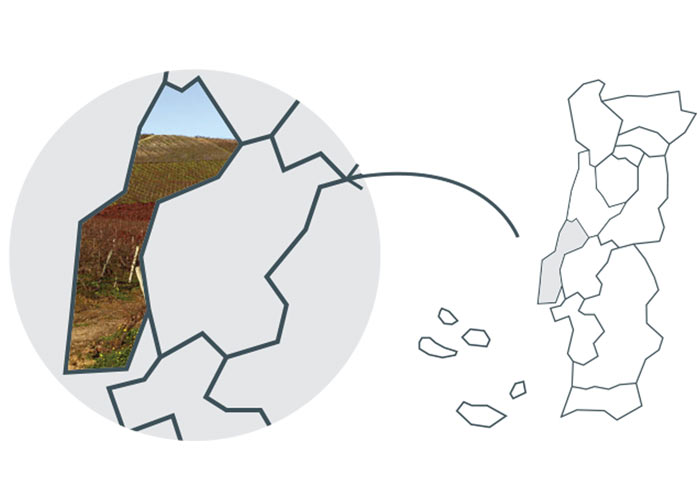Wine regions
Portuguese wine regions
Lisbon
A bit of history
Bucelas, onde of the region’s Protected Denominations (PDs), was rather appreciated during the French Invasions period, being one of Portugal’s chief exports during that time, as British soldiers got fond of it during their stay in Portugal. General Wellington enjoyed it so much he actually introduced it to royalty.
Colares, another of the region’s PDs, also has a mark in our literature, being mentioned (a lot) in several of Eça de Queirós novels – the Portuguese writer who, like no other, has characterized our culture in the XIX century.
What to expect?
The Lisbon region is a long, thin region running up beside the Atlantic. Wind is inevitably a strong feature beside the coast – no wonder that these undulating hills bristle with windmills, and no wonder that coastal vines are wind-stressed and hard pressed to ripen their grapes. Just a little way inland, however, a backbone of hill and mountain ranges offers some protection to many eastern parts of the Lisbon region. So, wines vary a lot depending on their specific location.
A number of the top wine estates of Lisboa are in or around the DOC region of Alenquer, tucked in to the east of the Serra de Montejunto, and therefore a little warmer, a little less windy and wet. Grapes can ripen well, and red wines especially can be top class.
The largest DOC region within the VR Lisboa area, up in the north, on the western slopes and hills of the Candeiros and Aire mountains. This is scenic, limestone country, clothed with orchards and olive groves as well as vines. It is possible to make good, rich reds and modern whites, but some traditionally-made wines here are low in alcohol, high in acidity, known as DOC Encostas de Aire.
A gap in the hills on a level with the Peniche Peninsula and the town of Óbidos means that the DOC Óbidos, region in the centre-east of VR Lisboa is windy and cool. These are ideal conditions for growing grapes for sparkling wines, and indeed some of Portugal’s best sparkling wines come from Óbidos. The DOC of Lourinhã, between the Óbidos wine region and the ocean, is cooler and windier still, and this DOC, whose grapes ripen with difficulty, is therefore restricted to brandies.
Reds
Common varieties: Alicante Bouschet, Aragonez, Castelão, Tinta Miúda, Touriga Franca, Touriga Nacional and Trincadeira, and some international varieties suck as Chardonnay, Cabernet Sauvignon and Syrah.
Whites
Common varieties: Arinto, Fernão Pires, Malvasia, Seara-Nova and Vital.
Adapted from: CVR Lisboa, Wines of Portugal, Instituto do Vinho e da Vinha.


